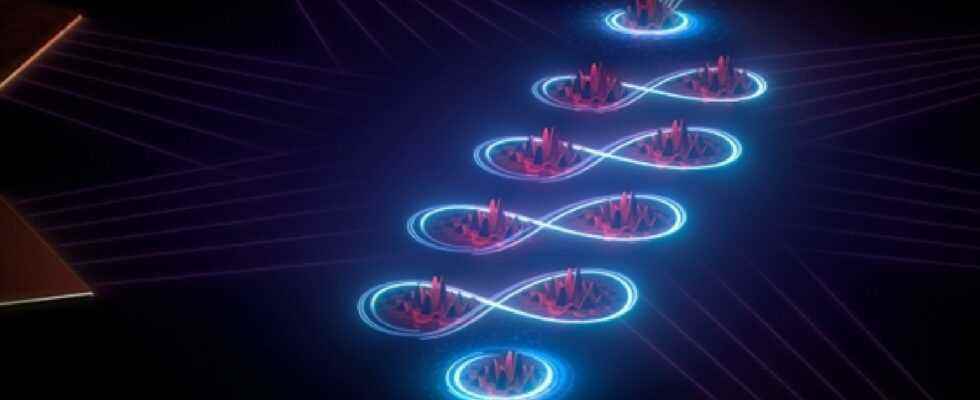An Australian research team has succeeded in designing a quantum circuit inspired by a molecule in nature. The result works. But it is not marketable yet.
It took 9 years for this research team to develop their breakthrough published on June 22, 2022 in Nature. They successfully mimicked the structure and energy states of an organic compound called polyacetylene. In doing so, they designed a circuit similar to the first quantum processor. And like the processor in our computers, it is an essential part of future quantum computers.
The challenge is to reproduce what happens in nature. The circuit built by the team within a silicon chip is a string of 10 quantum dots (each composed of a small number of phosphorus atoms) simulating the precise location of atoms found in the chain of a polyacetylene molecule.
This was a scientific challenge: If we go back to the 1950s, Richard Feynman [le physicien] said that you couldn’t understand how nature works if you couldn’t build matter to the same scale of magnitude as it “, details Michelle Simmons, on the site of the university of Syndey where she piloted this work. ” And so that’s what we do, we literally build it from the bottom up, where we mimic the polyacetylene molecule by putting atoms in the silicon with the exact distances. »
To generate a quantum computing system, it is necessary to generate qubits as storage units. So we need a quantum state. In the processor developed by this team, “ the atoms themselves create the qubits, which requires fewer elements in the circuits “. Only six metal gates control the movement of electrons, “ while most quantum computing architectures require almost double or even more “. The problem is that a quantum state is very unstable, subject to interference — less boundary components, so no problem.
Commercial computers, is it soon?
The whole difficulty lies in the skillful work that this represents: you need the exact same number of quantum dots as in the natural molecule, the exact right size of the points and the exact right distance between the points, so that the can operate within the silicon chip. A simple error in the size of the points, for example, makes their control impossible.
By measuring how the current flowed through the processor, it turned out that the theoretical predictions matched the result perfectly. ” So that means we can now start to understand more and more complicated molecules by putting the atoms in place as if they were mimicking the real physical system. “, explains Michelle Simmons.
“We are close to the limit of what conventional computers can do”
michelle simons
This success means that with such a processor, one could carry out operations that would be infinitely slower, or even simply impossible, with a conventional computer. And if the researchers manage to increase the processor to 20 quantum dots instead of 10, this opens the way to even more complex calculations. ” We’re close to the limit of what conventional computers can do, so it’s like crossing a border into the unknown. »
When might this breakthrough translate into a usable, marketable device — the first quantum computers? Michelle Simmons predicts that it would be possible to have ” some kind of business outlet within 5 years. The meeting should therefore be considered for 2027, which seems very ambitious all the same.

